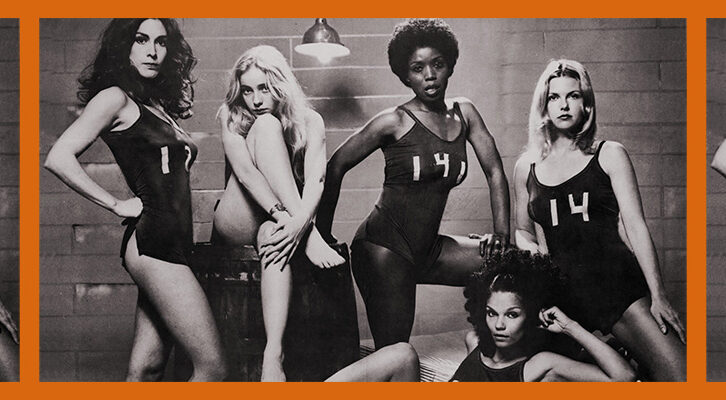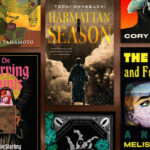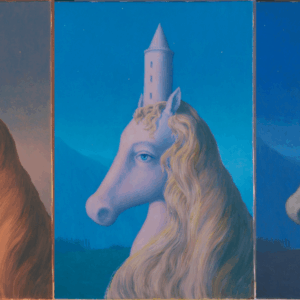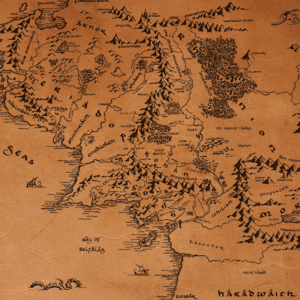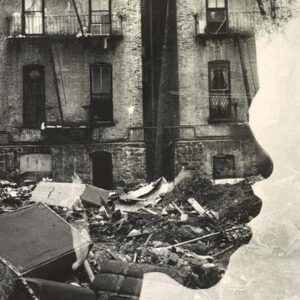
Why Film and Literature Fear Telling The Truth About Losing a Parent
Tiffany Graham Charkosky on Finding Healing in Telling Her Own Story of Maternal Loss
When my older son was six years old, we watched the first half of The Lion King. I’d loved this movie as a child and had seen it dozens if not hundreds of times. I knew every song by heart. We got to the part in the movie where Mufasa, the King, is killed when his jealous brother throws him into a stampede. Simba watches his father die from the top of a gorge.
“How could you make me watch this?” My son screamed at me, tears glazing his cheeks. We didn’t finish the movie.
I learned my lesson and never asked my children to watch Bambi. A child losing their parent is so heartbreaking it can only be shown happening to animals and it still makes us cry.
I saw my mother’s death up close, her illness spread over two excruciating years. I was eleven when she died. I gravitated towards books and movies that centered parental loss and to the kinds of characters missing from my own peer group. I learned quickly that it was easiest to continue pretending everything about me was still mostly the same, but stories gave me a place to feel things I wasn’t comfortable expressing in my real life.
Losing your mom is never a footnote to your story. It’s an inciting incident, one forever coloring everything that comes after.
But as I’ve grown up and become a mother myself, something about these books and characters still bothers me: why do so many of these mother-deaths feel like plot devices instead of emotional explorations?
Take Anne Shirley, for example. Anne—with an E—is one of my most beloved characters of all time. However, she showed up to Matthew and Marilla Cuthbert’s house as an orphan and instead of being a child with significant emotional wounds, she is the bright ray of sunshine who brings out Marilla’s kindness. With her brains, compassion, and smart wit, she is a joyful gift to Avonlea. Maybe these sunny characteristics became her trauma response, her way of becoming lovable to caretakers who didn’t want her?
Or Mary Lennox from The Secret Garden? She arrives at her uncle’s home in England after losing her parents in India. At the opposite end of the personality spectrum from Anne, Mary is described as spoiled and ungrateful. However, even before she was orphaned, she was largely ignored by her parents. She finds healing in her deceased aunt’s garden and a friendship with her cousin Colin, who’d been left to live as an invalid. She pulls out a softness in her uncle, Archibald Craven, and helps him learn to love his son.
These girls, both so young, have faced gut-wrenching losses, but we, as readers, witness their impact on others while their personal struggles with grief remain conveniently invisible. When I was writing my memoir, Living Proof: How Love Defied Genetic Legacy, I made a decision to show my readers what that loss felt like and how it shaped my life, not just in the immediate aftermath, but the decades to follow.
Mary Lennox was sound asleep while nearly everyone in her house died from cholera. Anne Shirley was a baby when her parents died from typhoid fever. Poor Simba saw his father’s death and was so broken, he ran away.
Living Proof starts with me discovering I could have inherited the same cancer-causing genetic mutation that my mom had. But for readers to understand why that was so terrifying to me, I created a story structure that moves back and forth in time between making a decision to pursue genetic testing and events leading to my mother’s death.
A few summers after my mom died, my friends and I watched Clueless on repeat. But I was hung up on the part where Cher Horowitz asks us to agree that her mother was a total Betty, who’d died when Cher was young after complications from liposuction. It felt trite. Cher’s popularity, beauty, and unemotionally damaged storyline nagged at me. It was an afterthought, a plot point giving us the reason Paul Rudd had shown up to complicate her life.
I knew, though, that losing your mom is never a footnote to your story. It’s an inciting incident, one forever coloring everything that comes after. Where were Cher’s emotional battle wounds?
I read Jane Eyre two summers after watching Clueless as a summer reading assignment on the beach, never more engrossed in a story in my life. Witnessing Jane’s ability to become honest with herself after a childhood defined by a mixture of hostility and neglect captivated me. Maybe there was hope I’d also come out on the other side of the darkness living inside of me (though I hoped I’d fall in love with someone kinder and less damaged than Mr. Rochester).
Early in my mom’s illness, when the doctors she kept visiting didn’t yet know she had cancer, she took my friend Sarah and me to see My Girl in the theater. I loved Vada’s strange fashion sense and the way her inner and outer worlds didn’t always match. I’d wept when Thomas Jay died and kept sniffling when Vada read her poem afterwards.
“I accidentally took Tiffany to see her first tearjerker,” my mom reported to my dad when he got home from work.
Once I stopped relying on the imaginations of other authors to capture the feelings living inside of me, I discovered the exact character I’d been looking for all along.
I’d later discover how losing your mom as a child infiltrates every thought or movement that comes after. I read The Secret Garden multiple times the year my mom died. I rewatched My Girl with a different perspective. The Lion King came out the summer after she died and my grandma bought the VHS tape. My younger siblings and I drank cans of Faygo in her basement and watched it over and over while our dad was at work fixing cars. Hakuna Matata lived in my brain, though I was filled with worries all day, every day.
I sought to fill a hole with books and movies, something to make me feel whole again. That feeling would never come.
During the pandemic, when my sons were eight and eleven years old, my family watched The Queen’s Gambit. Beth Harmon’s mother drove into oncoming traffic, attempting to kill both herself and her daughter. Beth survived and was plagued with memories of her mother asking her father for help, of seeing his new family, of the accident, and of her mother. At the orphanage where she lived afterwards, she was given a daily dose of tranquilizers and learned how to play chess. Throughout her rise as a chess phenom, we see the ways in which her trauma has shaped her. We empathize with the wall she built around herself.
Later, when Beth’s adopted mother dies—even though they had a strange, alcohol-infused, codependent relationship—we feel the pain of that loss more deeply than we would have if we didn’t understand everything that came before it.
I felt my sons were too young for this show, but it amazed me that both, especially my younger one, were captivated by the story. Though everything about my personality felt different from Beth, there was a part of me that loved them being so into a show and a character with losses that shaped her in the same way mine felt formative to me.
I’d spent most of my life trying to prove that losing my mom hadn’t broken me. Yet, it was only when I allowed myself to fully feel the magnitude of that loss that I truly began to heal. To write Living Proof, I sat with my memories for thousands of hours. After decades, I made sense to myself in a way I hadn’t before. The wholeness I sought came when I was willing to examine my own story. Once I stopped relying on the imaginations of other authors to capture the feelings living inside of me, I discovered the exact character I’d been looking for all along.
__________________________________
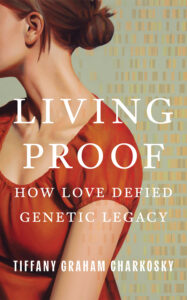
Living Proof: How Love Defied Genetic Legacy by Tiffany Graham Charkosky is available from Little A.
Tiffany Graham Charkosky
Tiffany Graham Charkosky’s writing explores love, human dynamics, and relationships. Her essays and short stories have been published in Gordon Square Review, Mutha Magazine, The Avalon Literary Review, and South Dakota Review. She lives in Northeast Ohio with her family and has worked in the arts for over twenty years.











